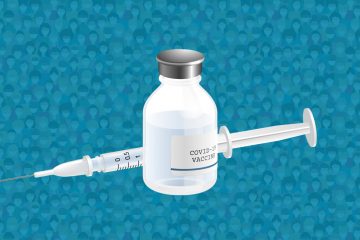Sorting out Lyme and Associated Coinfections "There is a need to sort it all out clinically to provide guidance in testing and treatment."
I n addition to Borrelia burgdorferi (Bb), ticks may carry and transmit other infections. Furthermore, patients with disseminated Lyme complicated by these coinfections are usually immunocompromised and may also manifest signs and symptoms of reactivated latent infections and opportunists. All can add to morbidity and may need to be treated.
Because of the large number of these other infections, the cost of reliably testing for all of them as a matter of routine is prohibitive.
Also, as in the case with Bb infection, laboratory tests for them are often insensitive. Thus there is a need to sort it all out clinically to provide guidance in testing and treatment. Here are some clues:
Classic Lyme (Bb infection)
- Gradual onset of initial (viral-like) symptoms–this often makes it difficult to pinpoint when the infection began.
- Multisystem–almost always, in disseminated stages, involves more than one part or system (i.e., joint pain plus cognitive dysfunction).
- Migratory–first a knee will hurt, then over time this may lessen and the elbow or shoulder acts up, and later the joints calm down but headaches worsen.
- Stiff joints and loud joint crepitus, especially the neck (“Lyme shrug”).
- Headaches are often nuchal and associated with stiff, painful, and crepitant neck.
- Afternoon fevers, often unnoticed–most Lyme patients have subnormal temperatures in the morning but rise to 99+ by early to mid-afternoon. No obvious sweats.
- Tiredness and limited stamina- often is a strong need to rest or even nap in the afternoon, especially when the flushed face and elevated temperature appears.
- Four-week cycles–Bb activity, and thus symptoms, wax and wane in a cycle that repeats roughly every four weeks. This cycle, if clear, can guide your treatments.
- Slow response to treatment, with an initial symptom flare in most (“Herxheimer-like reaction”), then improvement over weeks, punctuated by the monthly symptom flares. Likewise, if treatment is ended too soon, an initial period of well-being will gradually be replaced by a return of symptoms over a few weeks.
- EM rash in 25% to 50% of patients
Bartonella and “Bartonella-Like Organisms”
- Gradual onset of initial illness.
- CNS symptoms are out of proportion to the musculoskeletal ones–if a patient has no or minimal joint complaints but is severely encephalopathic (see below), then think of Bartonella/BLO.
- Obvious signs of CNS irritability can include muscle twitches, tremors, insomnia, seizures, agitation, anxiety, severe mood swings, outbursts, and antisocial behavior.
- GI involvement may present as gastritis or abdominal pain (mesenteric adenitis).
- Sore soles, especially in the morning.
- Tender subcutaneous nodules along the extremities, especially outer thigh, shins, and occasionally along the triceps.
- Occasional lymphadenopathy.
- Morning fevers, usually around 99; occasionally light sweats are noted.
- Elevated vascular endotherlial growth factor (VEGF) occurs in a minority, but the degree of elevation correlates with activity of the infection and may be used to monitor treatment.
- Rapid response to treatment changes–often symptoms improve within days after antibiotics are begun, but relapses occur also within days if medication is withdrawn early.
- May have papular or linear red rashes (like stretch marks that do not always follow skin planes), especially in those with GI involvement.
Babesia Species
- Rapid onset of initial illness, often with sudden onset of high fever, severe headaches, sweats, and fatigue; thus it is easy to know when infection began.
- Obvious sweats, usually at night, but can be day sweats as well.
- Air hunger, need to sigh and take a deep breath; dry cough without apparent reason.
- Headaches can be severe–dull, global (involves the whole head, described like the head is in a vise).
- Fatigue is prominent, does not clear with rest, and is made worse with exercise.
- Mental dullness and slowing of reactions and responses.
- Dizziness–more like a tippy feeling, and not vertigo or purely orthostasis.
- Symptoms cycle rapidly, with flares every four to six days.
- Hypercoagulation is often associated with Babesia infections.
- Rarely, splenomegaly.
- Very severe Lyme disease can be a clue to Babesia infection, as it will make Lyme symptoms worse and Lyme treatments less effective.
Ehrlichia/Anaplasma
- Rapid onset of initial illness with fever, headache, prostration.
- Headaches are sharp, knife-like, and often behind the eyes.
- Muscle pain, not joint pain, and can be mild or severe.
- Low WBC, low platelet count, elevated liver enzymes, and (rarely) inclusions seen in the WBCs.
- Rarely see diffuse vasculitic rash, including palms and soles (less than 10%).
- Rapid response to treatment.
DNA Viruses (HHV-6, EBV, CMV)
- Persistent fatigue, made worse with exercise.
- Sore throat, lymphadenopathy, and other viral-like complaints.
- May see elevated liver enzymes and low WBCs.
Mycoplasma
- Gradual onset.
- May be light night sweats
- Symptoms are made worse with exercise.
- Major fatigue and neurological dysfunction, especially autonomic neuropathies.
- Metabolic disturbances, immune damage, very low CD57 count (less than 20).
- Found in the sickest and most poorly responding Lyme patients (CFIDS-like).






























I would like more information concerning Lyme and co-infections
Hi Jonathan,
Here’s some more information concerning Lyme and co-infections:
https://www.lymedisease.org/members/resources/lyme-disease-resources-non-members/
https://www.lymedisease.org/lyme-basics/co-infections/about-co-infections/
Tracy, Band 41 is not specific to Lyme. Other spirochetal infections can also light up band 41.